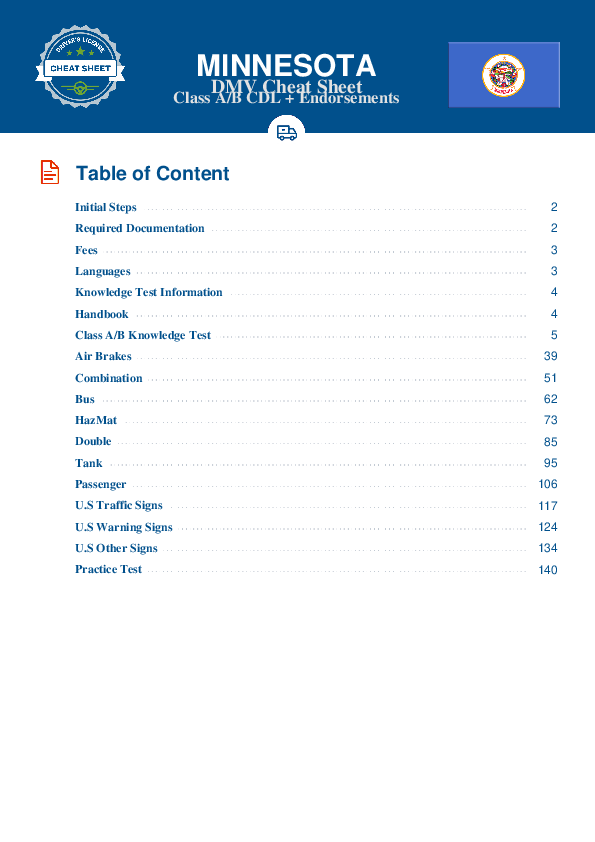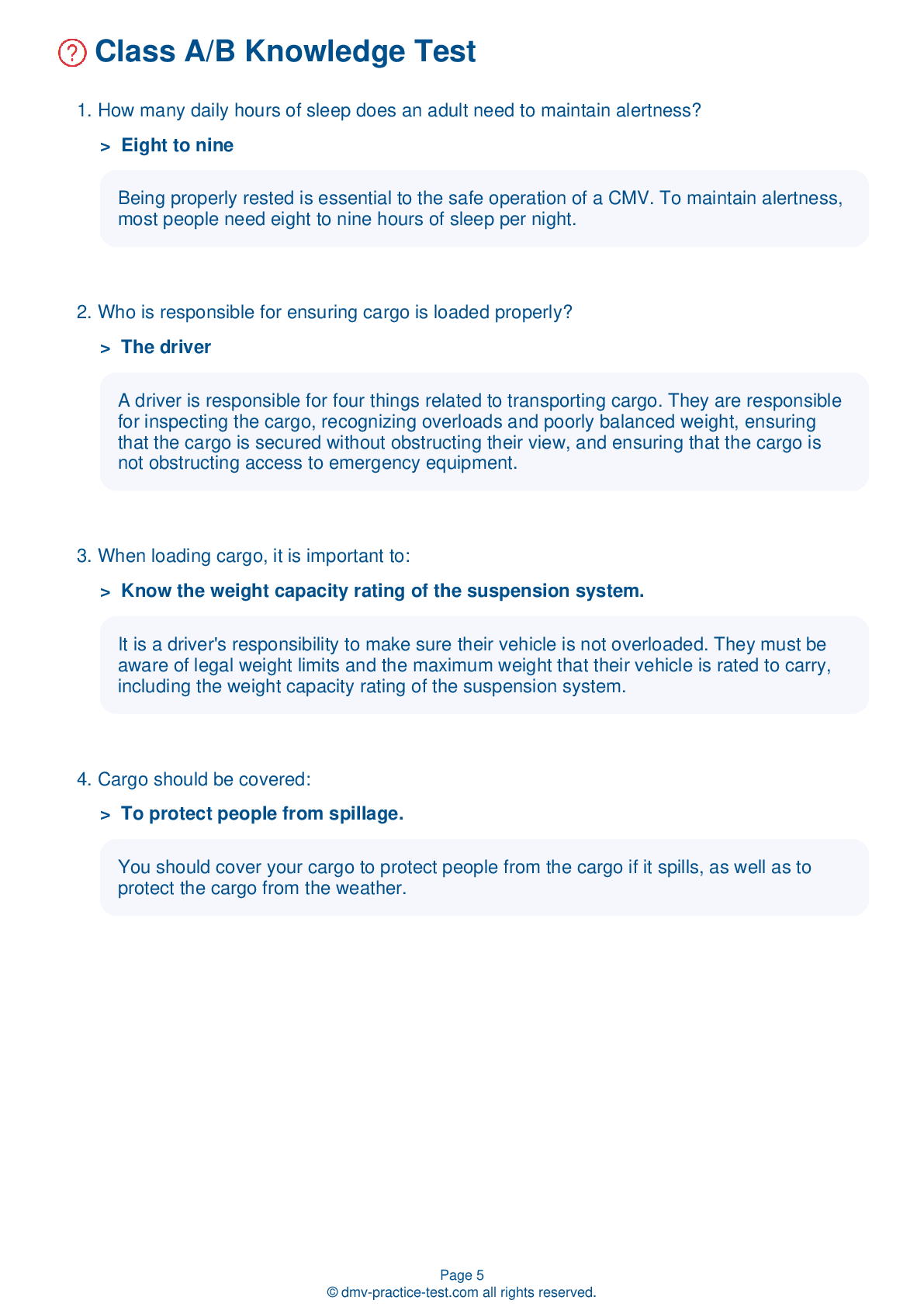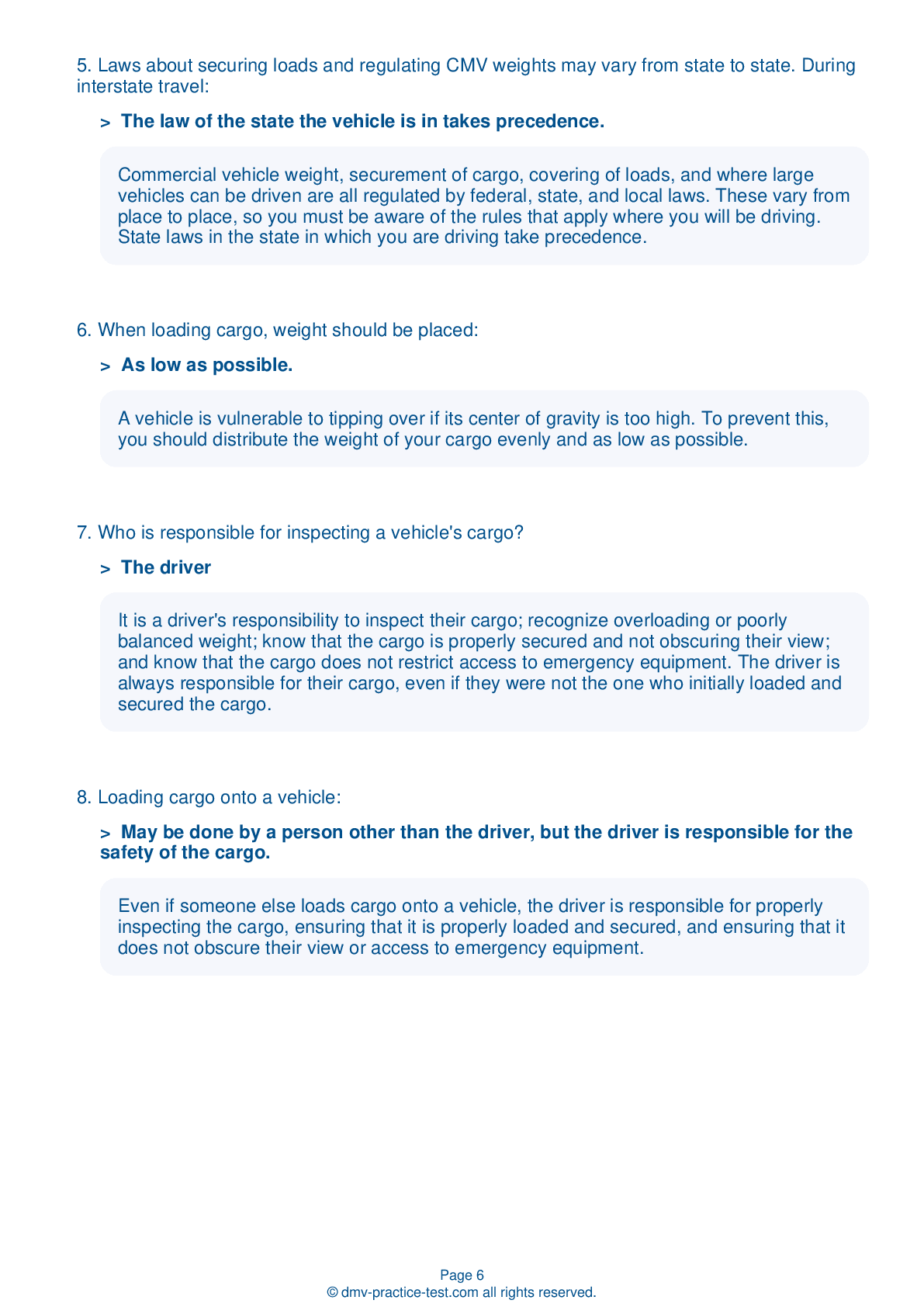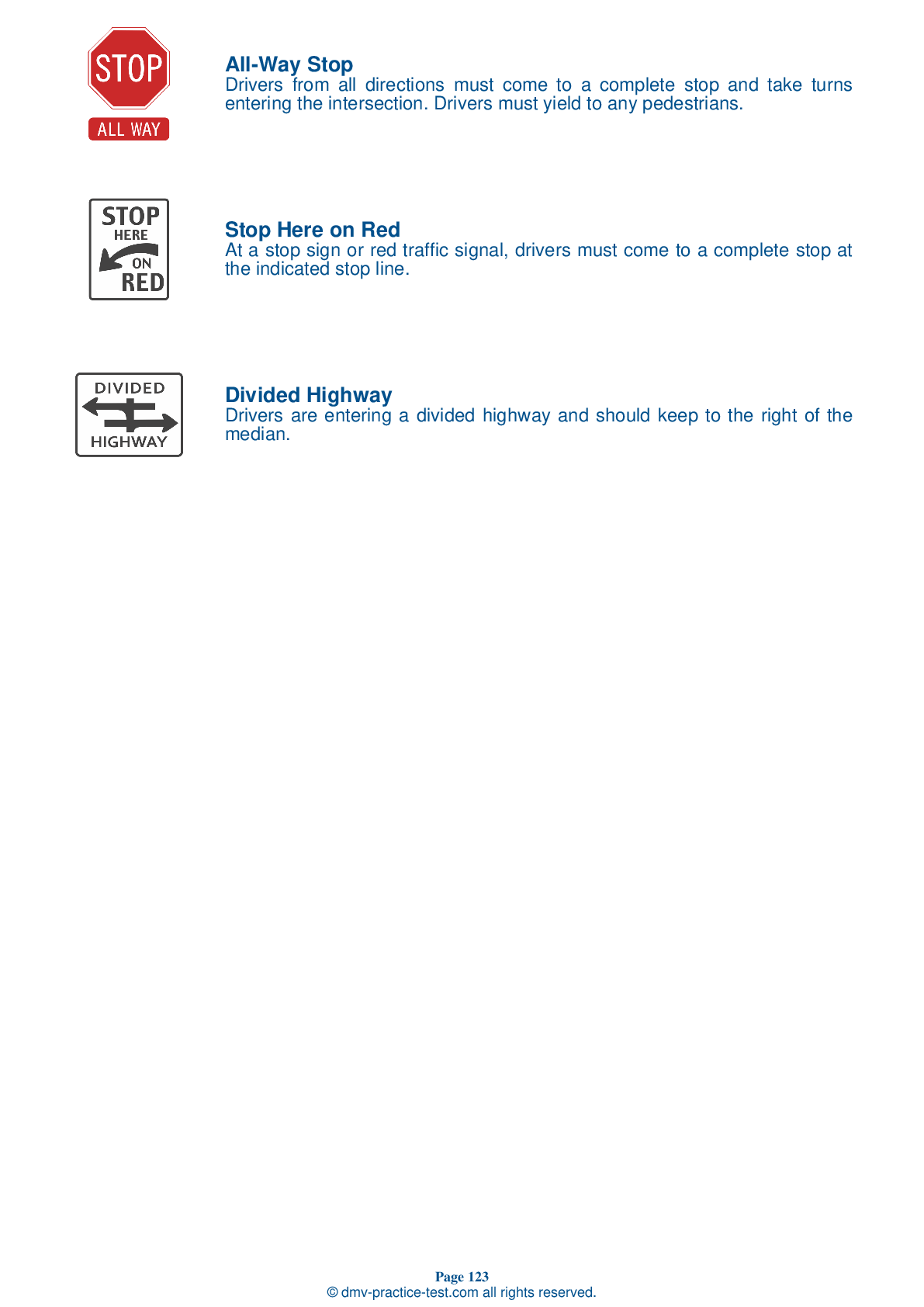Combination Vehicles Practice Test | Minnesota 2025 #1 Page 3 of 3
Train for FREE online with our Minnesota CDL combination vehicle test. The official exam test consists of several obligatory parts, with all of them checking your knowledge of different blocks of road rules. If you need to obtain a MN combination license in 2025, practice as much as possible. Free sample tests published on our website will help you check and improve your knowledge and boost your grades. Please bear in mind that DMV requirements for issuing a combination license may vary from state to state.
15 . When coupling:
Incorrect coupling and uncoupling of combination vehicles can have extremely dangerous consequences.
16 . During a trip, which shut-off valves should be open?
When starting a trip, be sure that all shut-off valves are in the open position, except for the last valves on the rear trailer. It is important that air reaches the brakes on all trailers and that the air is not able to escape from the back of the vehicle.
17 . The best way to recognize that your trailer has started to skid is by:
The easiest way to become aware that your trailer has begun to jackknife is to observe it in your mirrors. Checking your trailer in your mirrors will also allow you to spot any skidding at the earliest possible moment.
18 . The trailer hand valve should:
The trailer hand valve works the trailer brakes but should only be used when testing them. Using it while driving could create a skid. Never use the trailer hand valve while parking because doing so may release the air pressure from the braking system, releasing the brakes that are holding the vehicle in place.
19 . If an air supply control is in its "emergency" position:
Tractor protection controls in older vehicles may be operated by levers instead of knobs. If an air supply control is set in its "emergency" position, the air supply will be stopped and the trailer emergency brakes will be applied.
20 . Emergency air lines are often coded with the color:
In general, the parts of the service air line are coded blue and the parts of the emergency air line are coded red.
See the exact questions that will be on the 2025 Minnesota DMV exam.
99.2% of people who use the cheat sheet pass the FIRST TIME
Lillian MCcranie explains how our CDL study guide was helpful in passing the exam and recommends it to everyone.
Cameron tells us how he purchased the CDL exam, and found it to be a useful tool which helped him pass the exam and find a job.



